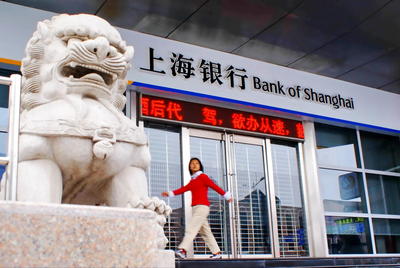One might ask how the renminbi could be internationalised without a liberalised capital account. In truth, internationalisation of the renminbi is capital account liberalisation in disguise. If progress has been made in the renminbi’s internationalisation, it can be regarded as a by-product of capital account liberalisation.
The pilot scheme allows enterprises on the Chinese mainland to use renminbi to settle their trade transactions. But it also enables enterprises, especially large ones, to channel their funds between the mainland and Hong Kong in the name of RMB trade settlement. As a result, an offshore RMB market, known as the CNH market, was created in Hong Kong, side by side with an onshore market dubbed the CNY market. The former is a free market, while the latter is tightly regulated by the People’s Bank of China (PBOC).
Hence, two RMB exchange rates coexist: an onshore CNY exchange rate and an offshore CNH exchange rate. Due to expectations about the renminbi’s appreciation, and many other factors, the CNH was more expensive in dollar terms than the CNY until September 2011. The CNH–CNY spread encouraged arbitrage by importers on the mainland. Before the settlement scheme’s introduction, importers had to buy dollars in the onshore market. Now they could sell renminbi for dollars in the CNH market, creating pressure on the CNY to appreciate and pressure on the CNH to depreciate. This arbitrage should have eliminated the CNH–CNY spread fairly quickly. But the PBOC’s intervention and carry trade conducted by Hong Kong residents created offsetting pressure on the CNY and the CNH, respectively. As a result, the CNH–CNY spread was maintained and arbitragers gobbled up fat profits.
In mid-September 2011, financial conditions changed quite suddenly in Hong Kong. Due to liquidity shortages caused by the European sovereign debt crisis, banks from developed countries — especially those European banks with exposure in Hong Kong — withdrew their funds. As a result, the CNH fell against the dollar, while uncertainty about the Chinese economy also contributed to the fall of the CNH. Because the CNH became cheaper, mainland importers stopped buying dollars from the CNH market, returning to the CNY market. At the same time, mainland exporters stopped selling dollars onshore, and sold dollars in the CNH market instead. The reversal of the direction of exchange rate arbitrage created an onshore shortage in the supply of dollars, and hence a devaluation of the CNY against the dollar. Needless to say, the unwinding of carry trade by Hong Kong residents, who dumped their holdings of RMB assets — because of a dramatic rise in funding costs for carry trade and the reduced attraction of holding RMB assets — also contributed to the fall of the CNY.
The PBOC intervened, but to prevent the renminbi from falling rather than rising. Now, the renminbi has resumed its long-established course of slow appreciation in line with fundamentals, probably due to the PBOC’s intervention and a temporary lull in the global financial market.
This episode demonstrates two things. First, the use of the renminbi as a trade settlement currency has stealthily forced open China’s firewall of capital control. As a result, the fluctuation of short-term cross-border capital movements has become an important factor in determining the RMB exchange rate, and consequently, China’s exchange rate is becoming more volatile. Second, progress in the renminbi’s internationalisation based on expectations of its appreciation can be rolled back very easily. In fact, after the exponential increase in the early stage of the Pilot Scheme’s implementation, the increase in RMB deposits in Hong Kong has stalled at around RMB600 billion since last September, far short of the market expectation of RMB1 trillion.
The twists and turns of the renminbi’s internationalisation begs a very important question: does China really want to take the risk of fully liberalising its capital account without first putting its house in order and allowing the market to determine interest and exchange rates? The question facing China is not about the desirability of the renminbi’s internationalisation. It is about the prioritisation of China’s financial reforms and regime changes. That question is even more acute taking into consideration the fact that the global financial market is still in turmoil and China’s financial markets are in a pretty messy state.
It is a dangerous gamble to pin the hope of the emergence of a healthier and more robust financial system on the creative destruction of external shocks, while the existing system is still too weak to withstand these shocks.
Professor Yu Yongding is a leading Chinese academic, former member of the PBOC Monetary Policy Committee and former Director-General at the Institute of World Economics and Politics, Chinese Academy of Social Sciences.


While there maybe many hurdles that China has to pass to the stage when it can internationalise its currency, it could do an experiment of allowing its domestic residents (including legal ones such as firms) to own, keep and deposit key international currencies in designated Chinese banks, as a measure to diversify the ownership of foreign currencies from the the central bank.
This measure could gain valuable experiences and contribute further to the gradual liberalisation of capital account.